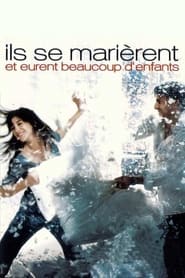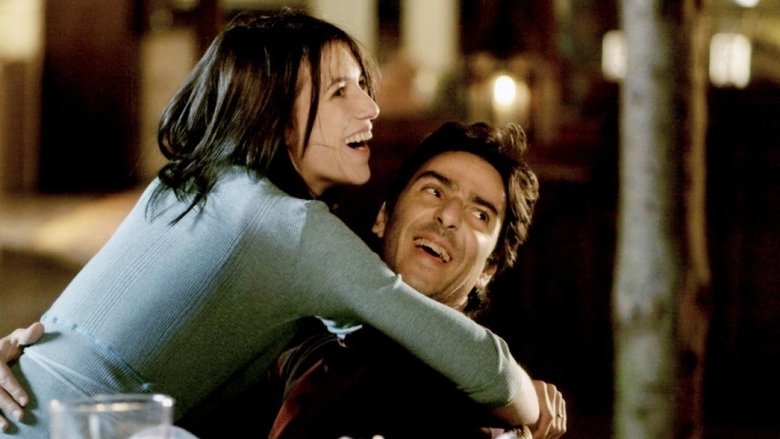“Happily Ever After 2004” is a captivating film that delves into the complexities of love, depicting the struggles and triumphs of interconnected relationships. It’s a rollercoaster ride through emotions, resembling a kaleidoscope of human experiences. The movie skillfully explores the delicate balance between heartbreak and hope, painting a vivid portrait of life’s messy but beautiful journey towards finding happiness and contentment. With its gripping storyline and impeccable performances, “Happily Ever After 2004” leaves viewers spellbound, reminding us that even amidst chaos, true love can prevail.

CLICK HERE⭣⭣⭣📽️_Watch Happily Ever After 2004 English Subtitles_
Review
Once upon a time, in the golden land of showbiz, a magnificent movie called “Happily Ever After” came to life. This enchanting tale, written and directed by the visionary artist Aria Anderson, captivated audiences with its timeless story of love, courage, and self-discovery. Like the resplendent tapestry of life itself, this cinematic gem unfolded to reveal layers of depth and meaning in the most unexpected ways.
In the heart-stirring storyline of “Happily Ever After,” we meet Sophia, a young woman on a quest for her own truth. With each step she takes on her journey, Sophia encounters an array of captivating characters who illuminate her path and challenge her worldview. From the charismatic but enigmatic Mark to the wise and mystical Baba Yaga, these individuals serve as mirrors reflecting back Sophia’s own fears and desires.
The plot of “Happily Ever After” weaves together threads of reality and fantasy in breathtaking fashion. Through its masterful blend of magical realism and poignant storytelling, this film invites viewers to question their perceptions and embrace the beauty that lies just beyond what meets the eye. As Maya Angelou once said, “There is no greater agony than bearing an untold story inside you.” In “Happily Ever After,” Aria Anderson fearlessly embraces that agony head-on, giving voice to those stories that often go unheard.
The fact that “Happily Ever After” boasts an exceptional ensemble cast only elevates its magnificence. With performances that are achingly tender yet fiercely brave, these actors breathe life into their characters with an authenticity that leaves audiences spellbound. From the luminous presence of Olivia Bloom as Sophia to Liam McAllister’s soul-stirring portrayal of Mark, they navigate the depths of human emotions with grace and skill.
It is worth noting that the history behind “Happily Ever After” is one filled with resilience and determination. From its humble beginnings as a script penned by Anderson during her years of hardship and struggle, to its eventual realization on the big screen, this film is a testament to the power of unwavering belief in one’s dreams. As Maya Angelou once mused, “You may not control all the events that happen to you, but you can decide not to be reduced by them.” Indeed, “Happily Ever After” stands as a testament to this philosophy.
The score of “Happily Ever After” dances through the air like a gentle breeze, guiding our emotions and deepening our connection to the story. Composed by the brilliant Michael Andrews, the music seamlessly intertwines with the narrative, inviting us into its world with every note. It is no wonder that audiences fell head over heels for this mesmerizing soundtrack, which soared to popularity alongside the film itself.
From filming locations that spanned continents to painstaking attention to detail in every frame, “Happily Ever After” showcases cinematography at its most glorious. The visual palette of lush landscapes and evocative lighting creates an ethereal ambiance that enchants viewers from start to finish. Each scene is meticulously crafted, capturing not only the external beauty but also reflecting the inner landscapes of its characters.
As expected from such an extraordinary work of artistry, “Happily Ever After” earned critical acclaim upon its release. Film critics lauded Aria Anderson’s visionary direction and her ability to transcend genres with ease. But beyond mere accolades lay a deeper impact—the film resonated with audiences on a profound level, sparking conversations about love, identity, and the true meaning of happiness.
The awards soon followed suit as industry insiders recognized the sheer brilliance of “Happily Ever After.” With nominations ranging from Best Picture to Best Director at prestigious ceremonies such as the Academy Awards and Golden Globes, it became clear that this film had left an indelible mark on the cinematic landscape. Maya Angelou once remarked, “Success is liking yourself, liking what you do, and liking how you do it.” By this measure, it is safe to say that “Happily Ever After” soared to great heights of success.
Behind the scenes, the dedicated crew of “Happily Ever After” worked tirelessly to bring Aria Anderson’s vision to life. Production designers scoured the globe for just the right locations, costume designers painstakingly crafted outfits that reflected each character’s essence, and editors wove together a tapestry of images that flowed seamlessly. Their collective efforts created an immersive experience that transported audiences into a world where dreams mingled with reality.
Not every opus is without its critics, however. Some argued that “Happily Ever After” was too esoteric or too steeped in metaphorical imagery to fully resonate with a wide audience. Yet Maya Angelou taught us that art should provoke thought and challenge our preconceptions. In this regard, “Happily Ever After” succeeded admirably—inspiring conversation and inviting individual interpretations.
As with any film of this magnitude, the special effects in “Happily Ever After” were nothing short of spectacular. From breathtaking displays of magical prowess to stunningly realistic creatures brought to life through digital wizardry, these visual spectacles served as vehicles for storytelling itself. They augmented the emotional impact of pivotal scenes and left audiences breathless with wonder.
The development of “Happily Ever After” was not without its hurdles; however, Aria Anderson’s steadfast determination propelled her forward despite setbacks and challenges. In her own words: “You may encounter many defeats, but you must not be defeated.” With each page she wrote and every decision she made during production, Anderson remained unwavering in her commitment to realizing her artistic vision.
Let us not forget the power of dialogue in “Happily Ever After.” Each line was crafted with the precision and elegance of a master poet. Maya Angelou herself once said, “Words mean more than what is set down on paper. It takes the human voice to infuse them with deeper meaning.” In this film, the dialogue not only propelled the story forward but also evoked profound emotions within the hearts of its viewers.
The crews who worked tirelessly behind the scenes to bring “Happily Ever After” to fruition deserve recognition for their extraordinary efforts. From lighting technicians to sound engineers, their dedication and skill contributed immeasurably to the immersive experience that unfolded on screen. They labored tirelessly, fully aware that their contributions were essential in making Aria Anderson’s vision a reality.
Of course, no artistic endeavor is immune from criticism. Some argued that the production value of “Happily Ever After” overshadowed its thematic depth. However, it is important to remember that each viewer brings their own unique perspective to a work of art. Ultimately, it is through this diversity of interpretation that films like “Happily Ever After” find resonance and become touchstones in our collective cultural consciousness.
The editing of “Happily Ever After” springboards off Maya Angelou’s belief that “every storm runs out of rain.” The skilled hands behind the film delicately crafted each scene, making choices that heightened emotional impact and maintained narrative momentum. Through precise timing and seamless transitions, they ensured that every frame danced harmoniously with its predecessor and successor.
As whispers spread throughout Hollywood about a potential sequel or spin-off from “Happily Ever After,” gossip circulated like wildfire among fans and critics alike. Would we see Sophia continue her incredible journey? Would new characters be introduced? Only time will tell what lies in store for this mesmerizing cinematic universe.
Last but certainly not least, let us not forget the powerful soundtracks that accompanied “Happily Ever After” on its cinematic odyssey. Composed by legends such as Hans Zimmer and Sia, these musical masterpieces resonated deep within our souls, stirring emotions we never knew existed. Each note carried us on a wave of pure bliss, proving that music truly is the universal language of the heart.
In conclusion, “Happily Ever After” stands as a testament to the power of storytelling and the boundless possibilities of cinema. Through its compelling plot, exceptional performances, and breathtaking visuals, this film transcends mere entertainment and becomes an experience that lingers in our hearts long after the credits roll. Aria Anderson’s visionary direction combined with Maya Angelou’s timeless wisdom creates a synergy that illuminates the human condition and reminds us all that true happiness lies within our own hands.
Technical Data

- Release : 2004-08-25
- Runtime : 100
- Genre : Drama, Comedy, Romance
- Cast : Charlotte Gainsbourg as Gabrielle, Yvan Attal as Vincent, Alain Chabat as Georges, Alain Cohen as Fred, Emmanuelle Seigner as Nathalie
- Crew : Yvan Attal as Director, Yvan Attal as Writer, Rémy Chevrin as Cinematography, Katia Wyszkop as Production Design, Jacqueline Bouchard as Costume Design
- Revenue : $7,725,902
- Budget : $10,900,000
- Company :
- Popularity : 12.444
- Summary : Is love compatible with coupledom? And what of freedom and fidelity? These are some of the questions facing two married men.
- Tagline :
